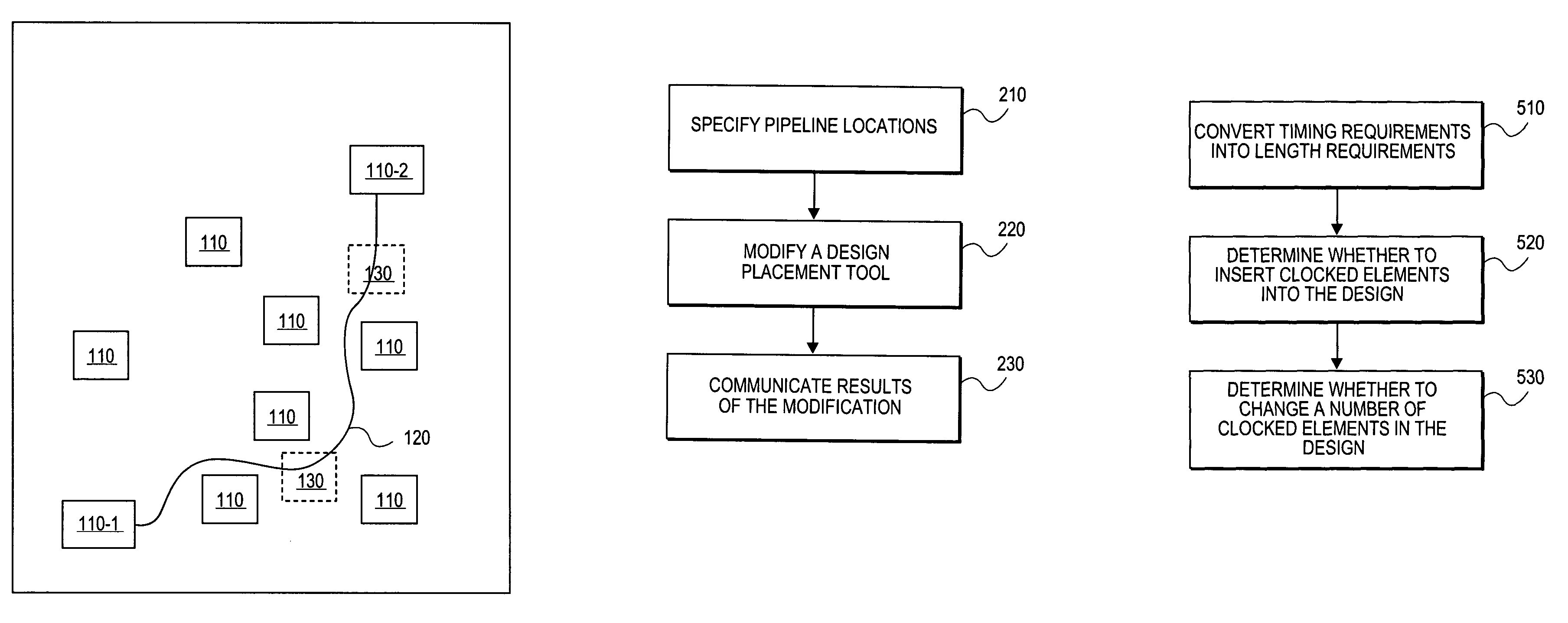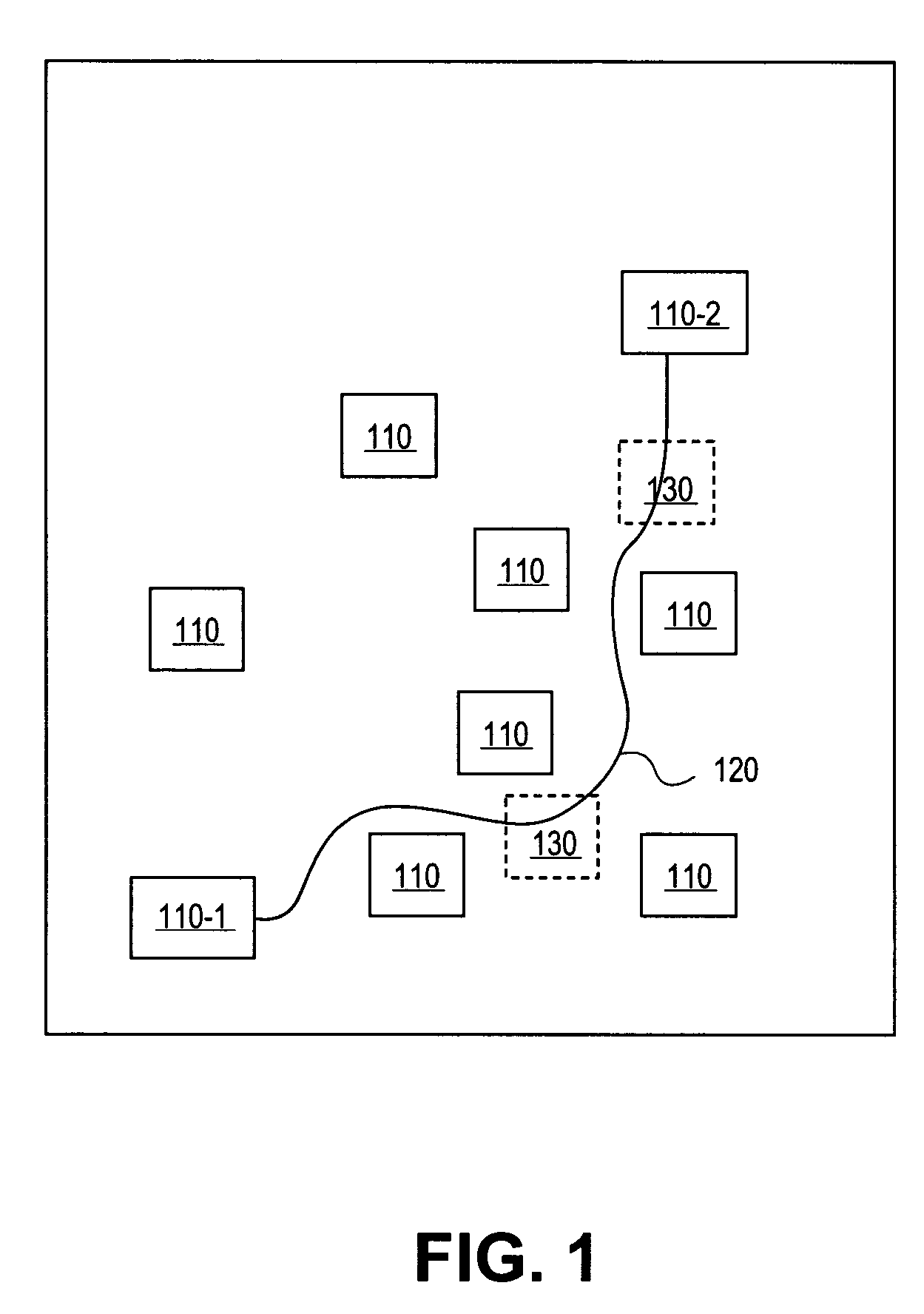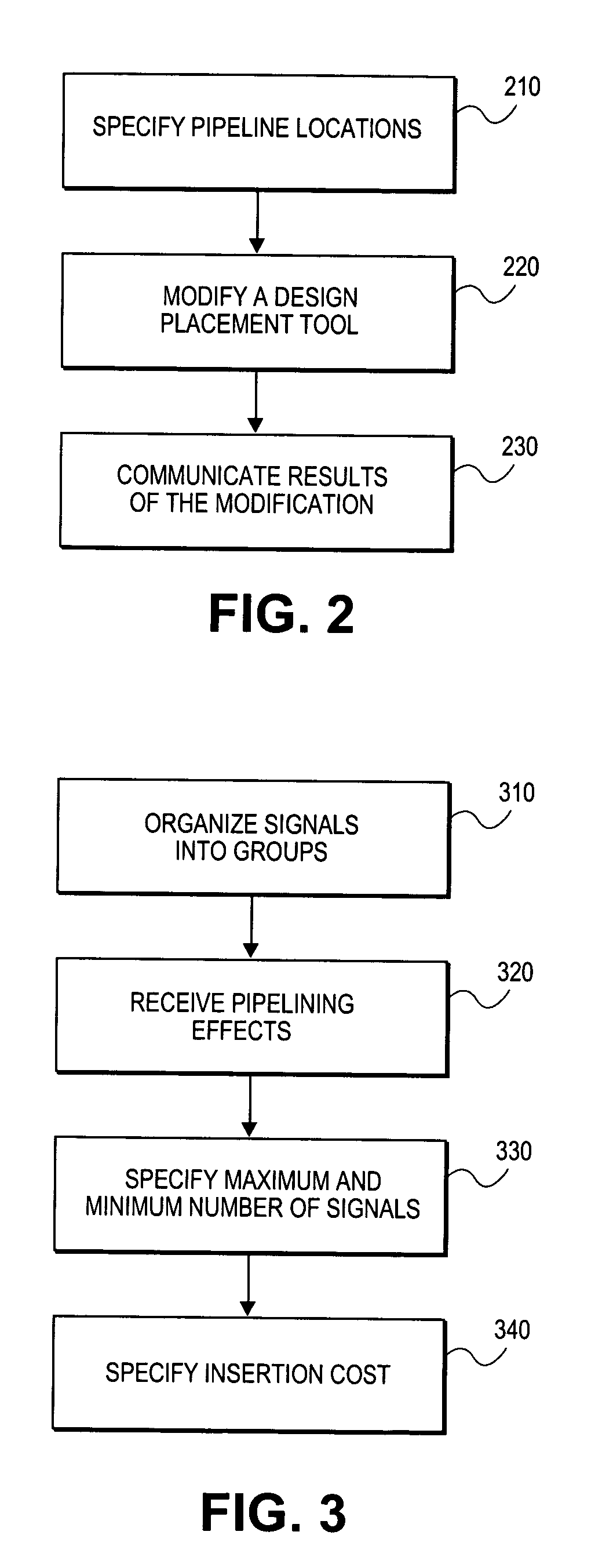Automatic insertion of clocked elements into an electronic design to improve system performance
a technology of electronic design and clock element, applied in the direction of computer aided design, instrumentation, cad circuit design, etc., can solve the problems of increasing the ratio of wire delay to gate delay, communication can now take much longer than the clock cycle required, and is not a feasible alternative for high-performance designs. , to achieve the effect of optimizing system performance and improving performan
- Summary
- Abstract
- Description
- Claims
- Application Information
AI Technical Summary
Benefits of technology
Problems solved by technology
Method used
Image
Examples
Embodiment Construction
[0016]To perform interconnect pipelining, either the user or an appropriate computer-implemented process specifies, to an automated tool, where it is possible to insert clocked elements such as flip-flops or latches, and specifies the impact of using each possible location. With this information, and in combination with the design's physical layout, the automated tool can choose which signals may benefit from additional stages. After insertion, information about inserted clocked elements are communicated to the designers and other tools in the design flow.
[0017]To create the pipeline, the impact of pipelining a given signal is considered. The signal's impact may vary greatly, depending on the importance of that signal to the overall system performance. For some signals, pipelining may adversely affect system performance. Avoiding pipelining may be a default mode for one or more signals, and can remain true where the highest performance is needed. For some signals, pipelining is free...
PUM
 Login to View More
Login to View More Abstract
Description
Claims
Application Information
 Login to View More
Login to View More - R&D
- Intellectual Property
- Life Sciences
- Materials
- Tech Scout
- Unparalleled Data Quality
- Higher Quality Content
- 60% Fewer Hallucinations
Browse by: Latest US Patents, China's latest patents, Technical Efficacy Thesaurus, Application Domain, Technology Topic, Popular Technical Reports.
© 2025 PatSnap. All rights reserved.Legal|Privacy policy|Modern Slavery Act Transparency Statement|Sitemap|About US| Contact US: help@patsnap.com



